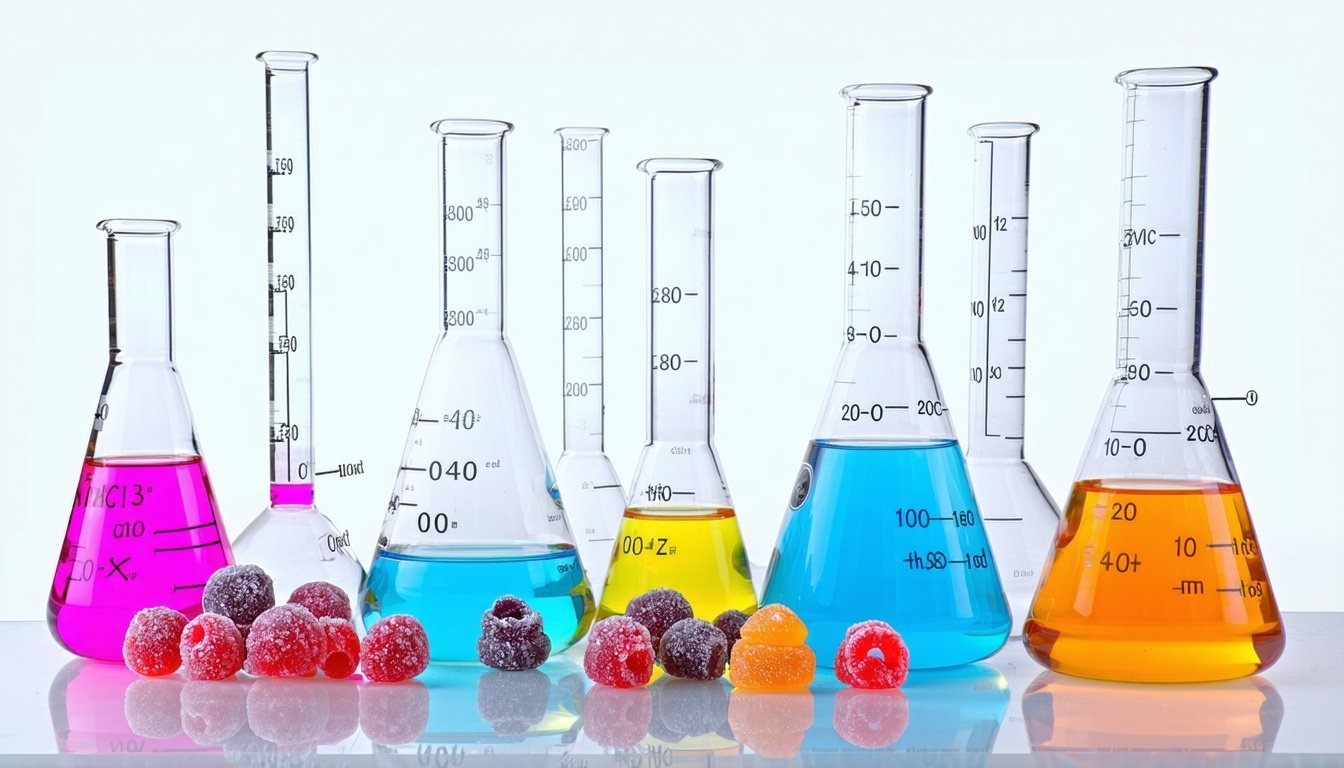Manufacturers who use Red No. 3 in food and ingestible drugs will have until January 15, 2027, or January 18, 2028, respectively, to reformulate their products.
On January 15, 2025, the Food and Drug Administration (FDA) issued an order [1] to revoke the authorization of use of FD&C Red No. 3, also known as erythrosine, in food [2] and ingested drugs [3].
What is FD&C Red No. 3? Uses, Risks, and How Testing Ensures Compliance
Red No. 3 is a synthetic additive used as a dye in various foods and pharmaceutical products to give a vibrant red or pink color. It is commonly used in:
- Candies and Confections
- Cakes, Cupcakes and Baked Goods
- Snacks
- Breakfast Cereals
- Dietary Supplements
- Pharmaceuticals
This ban will affect thousands of products currently on the marketplace. Food manufacturers have until January 15, 2027, to reformulate their products. Companies producing ingested drugs, including dietary supplements and prescription drugs, will have an extra year to comply.
Regulatory Basis: The Delaney Clause
This decision is based on the application of the Delaney Clause [4], of the Federal Food, Drug, and Cosmetic Act (FD&C Act) [5]. The Delaney Clause strictly prohibits the FDA from approving any food or color additive that has been found to induce cancer in humans or animals. In 2022, a color additive petition [6] presented new data that highlighted concerns about Red No. 3. The data indicated that exposure to high levels of this ingredient caused cancer in male laboratory rats. Specifically, the cancer developed as a result of a hormonal mechanism unique to male rats. These findings were significant, as they align with the Delaney Clause's criteria for prohibiting additives that show carcinogenic effects in animal studies.
FD&C Red No. 3 Alternatives: Colorants and Required Testing Methods
In the United States, Red No. 40 remains an approved and widely used synthetic food dye, making it a suitable alternative to Red No. 3. Presently, red No. 40 is commonly found in a variety of food and beverage products, from candies to soft drinks, and may be used in amounts consistent with good manufacturing practice.
For manufacturers seeking non-synthetic alternatives, several other approved color additives exist, including carmine, paprika, tomato lycopene extract, fruit juice, and vegetable juice.
Chemistry Testing for Reformulation After FD&C Red No. 3 Ban
Reformulating a product involves more than just swapping ingredients—it requires precise analytical testing to ensure compliance, quality, and performance.
Analytical Methods for Red No. 3 Detection
At Mérieux NutriSciences, our chemistry laboratories utilize validated analytical methods, including HPLC and LC-MS/MS, for the detection and quantification of FD&C Red No. 3, as well as other synthetic and natural colorants, across diverse food, supplement, and pharmaceutical matrices.
Compliance Testing for Synthetic and Natural Colorants
Our chemistry testing helps manufacturers:
- Confirm the removal of banned dyes like FD&C Red No. 3
- Evaluate alternative colorants for stability, intensity, and functionality
- Ensure label accuracy and meet global regulatory limits
- Detect non-permitted or undeclared dyes (e.g., Sudan dyes, Rhodamine B)
- Maintain product consistency during reformulation
With ISO-accredited methods and deep regulatory insight, our chemistry experts provide actionable data to support fast, safe, and compliant reformulations.
California’s Ban on FD&C Red No. 3: Compliance and Testing Impact
In 2023, the state of California announced an independent ban on the use of Red No. 3 in food products [7]. Commencing January 1, 2027, the ban will go into effect, prohibiting the sale of any food products within the state that contain Red No. 3.
Global Regulations on FD&C Red No. 3: Testing and Compliance by Region
In other countries, such as Canada and in Europe, Red No. 3 is permitted for use under the name "erythrosine". However, it is subject to maximum regulatory limits and may be restricted to certain food categories.
FD&C Red No. 3 Testing Services by Mérieux NutriSciences
As the FDA’s decision to revoke the authorization of FD&C Red No. 3 brings significant changes to the industry, manufacturers must act swiftly to ensure compliance. Reformulating products and updating labels are essential steps in this regulatory transition. Our Chemistry and Regulatory Compliance experts collaborate to provide comprehensive formulation analysis and label review services, ensuring your food, beverage, and dietary supplement products remain safe, accurate, and fully compliant. Ready to optimize your formulation? Contact our experts today to get started—and don't forget to download our services flyer for a complete overview of how we can support your success.
References:
[1] U.S. Federal Register. (2025, January 16). Color additive petition from Center for Science in the Public Interest et al.; request to revoke color additive listing for FD&C Red No. 3. https://www.federalregister.gov/documents/2025/01/16/2025-00830/color-additive-petition-from-center-for-science-in-the-public-interest-et-al-request-to-revoke-color
[2] U.S. Food and Drug Administration. (n.d.). 21 CFR 74.303 - Color additives exempt from certification; FD&C Red No. 3. FDA. https://www.accessdata.fda.gov/scripts/cdrh/cfdocs/cfCFR/CFRSearch.cfm?fr=74.303
[3] U.S. Food and Drug Administration. (n.d.). 21 CFR 74.1303 - Color additives exempt from certification; FD&C Red No. 3. FDA. https://www.accessdata.fda.gov/scripts/cdrh/cfdocs/cfCFR/CFRSearch.cfm?fr=74.1303
[4] U.S. Food and Drug Administration. (n.d.). Part III: Drugs and foods under the 1938 Act and its amendments. FDA. https://www.fda.gov/about-fda/changes-science-law-and-regulatory-authorities/part-iii-drugs-and-foods-under-1938-act-and-its-amendments
[5] U.S. Food and Drug Administration. (n.d.). Federal Food, Drug, and Cosmetic Act (FD&C Act). FDA. https://www.fda.gov/regulatory-information/laws-enforced-fda/federal-food-drug-and-cosmetic-act-fdc-act
[6] Color Additive; Center for Science in the Public Interest, et al.; Request to Revoke Color Additive Listing for Use of FD and C Red No. 3 in Food and Ingested Drugs, 4628–4634
[7] California Legislature. (2023). Bill AB-418: Public health: prohibition on the manufacture, sale, and distribution of food containing certain substances. California Legislative Information. https://leginfo.legislature.ca.gov/faces/billStatusClient.xhtml?bill_id=202320240AB418
